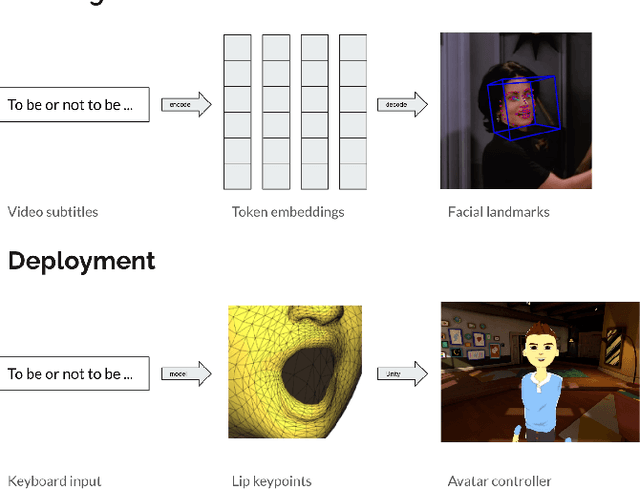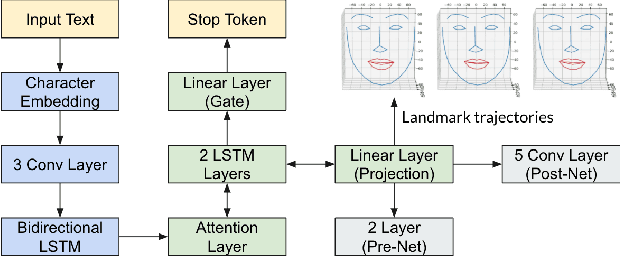Qiao Han
Dual-Label Learning With Irregularly Present Labels
Oct 21, 2024Abstract:In multi-task learning, we often encounter the case when the presence of labels across samples exhibits irregular patterns: samples can be fully labeled, partially labeled or unlabeled. Taking drug analysis as an example, multiple toxicity properties of a drug molecule may not be concurrently available due to experimental limitations. It triggers a demand for a new training and inference mechanism that could accommodate irregularly present labels and maximize the utility of any available label information. In this work, we focus on the two-label learning task, and propose a novel training and inference framework, Dual-Label Learning (DLL). The DLL framework formulates the problem into a dual-function system, in which the two functions should simultaneously satisfy standard supervision, structural duality and probabilistic duality. DLL features a dual-tower model architecture that explicitly captures the information exchange between labels, aimed at maximizing the utility of partially available labels in understanding label correlation. During training, label imputation for missing labels is conducted as part of the forward propagation process, while during inference, labels are regarded as unknowns of a bivariate system of equations and are solved jointly. Theoretical analysis guarantees the feasibility of DLL, and extensive experiments are conducted to verify that by explicitly modeling label correlation and maximizing the utility of available labels, our method makes consistently better predictions than baseline approaches by up to a 10% gain in F1-score or MAPE. Remarkably, our method provided with data at a label missing rate as high as 60% can achieve similar or even better results than baseline approaches at a label missing rate of only 10%.
NPAT Null-Space Projected Adversarial Training Towards Zero Deterioration
Sep 18, 2024Abstract:To mitigate the susceptibility of neural networks to adversarial attacks, adversarial training has emerged as a prevalent and effective defense strategy. Intrinsically, this countermeasure incurs a trade-off, as it sacrifices the model's accuracy in processing normal samples. To reconcile the trade-off, we pioneer the incorporation of null-space projection into adversarial training and propose two innovative Null-space Projection based Adversarial Training(NPAT) algorithms tackling sample generation and gradient optimization, named Null-space Projected Data Augmentation (NPDA) and Null-space Projected Gradient Descent (NPGD), to search for an overarching optimal solutions, which enhance robustness with almost zero deterioration in generalization performance. Adversarial samples and perturbations are constrained within the null-space of the decision boundary utilizing a closed-form null-space projector, effectively mitigating threat of attack stemming from unreliable features. Subsequently, we conducted experiments on the CIFAR10 and SVHN datasets and reveal that our methodology can seamlessly combine with adversarial training methods and obtain comparable robustness while keeping generalization close to a high-accuracy model.
Enhancing the "Immunity" of Mixture-of-Experts Networks for Adversarial Defense
Feb 29, 2024



Abstract:Recent studies have revealed the vulnerability of Deep Neural Networks (DNNs) to adversarial examples, which can easily fool DNNs into making incorrect predictions. To mitigate this deficiency, we propose a novel adversarial defense method called "Immunity" (Innovative MoE with MUtual information \& positioN stabilITY) based on a modified Mixture-of-Experts (MoE) architecture in this work. The key enhancements to the standard MoE are two-fold: 1) integrating of Random Switch Gates (RSGs) to obtain diverse network structures via random permutation of RSG parameters at evaluation time, despite of RSGs being determined after one-time training; 2) devising innovative Mutual Information (MI)-based and Position Stability-based loss functions by capitalizing on Grad-CAM's explanatory power to increase the diversity and the causality of expert networks. Notably, our MI-based loss operates directly on the heatmaps, thereby inducing subtler negative impacts on the classification performance when compared to other losses of the same type, theoretically. Extensive evaluation validates the efficacy of the proposed approach in improving adversarial robustness against a wide range of attacks.
BlockEcho: Retaining Long-Range Dependencies for Imputing Block-Wise Missing Data
Feb 29, 2024Abstract:Block-wise missing data poses significant challenges in real-world data imputation tasks. Compared to scattered missing data, block-wise gaps exacerbate adverse effects on subsequent analytic and machine learning tasks, as the lack of local neighboring elements significantly reduces the interpolation capability and predictive power. However, this issue has not received adequate attention. Most SOTA matrix completion methods appeared less effective, primarily due to overreliance on neighboring elements for predictions. We systematically analyze the issue and propose a novel matrix completion method ``BlockEcho" for a more comprehensive solution. This method creatively integrates Matrix Factorization (MF) within Generative Adversarial Networks (GAN) to explicitly retain long-distance inter-element relationships in the original matrix. Besides, we incorporate an additional discriminator for GAN, comparing the generator's intermediate progress with pre-trained MF results to constrain high-order feature distributions. Subsequently, we evaluate BlockEcho on public datasets across three domains. Results demonstrate superior performance over both traditional and SOTA methods when imputing block-wise missing data, especially at higher missing rates. The advantage also holds for scattered missing data at high missing rates. We also contribute on the analyses in providing theoretical justification on the optimality and convergence of fusing MF and GAN for missing block data.
Facial Landmark Predictions with Applications to Metaverse
Sep 29, 2022



Abstract:This research aims to make metaverse characters more realistic by adding lip animations learnt from videos in the wild. To achieve this, our approach is to extend Tacotron 2 text-to-speech synthesizer to generate lip movements together with mel spectrogram in one pass. The encoder and gate layer weights are pre-trained on LJ Speech 1.1 data set while the decoder is retrained on 93 clips of TED talk videos extracted from LRS 3 data set. Our novel decoder predicts displacement in 20 lip landmark positions across time, using labels automatically extracted by OpenFace 2.0 landmark predictor. Training converged in 7 hours using less than 5 minutes of video. We conducted ablation study for Pre/Post-Net and pre-trained encoder weights to demonstrate the effectiveness of transfer learning between audio and visual speech data.
 Add to Chrome
Add to Chrome Add to Firefox
Add to Firefox Add to Edge
Add to Edge